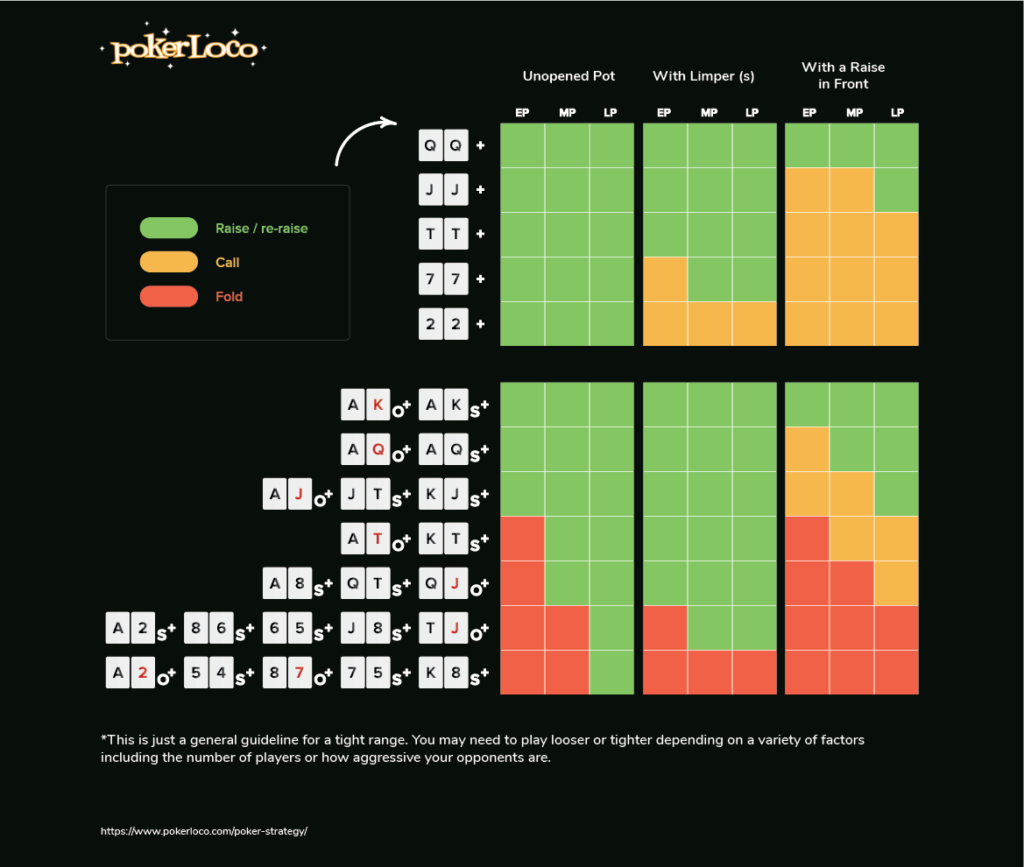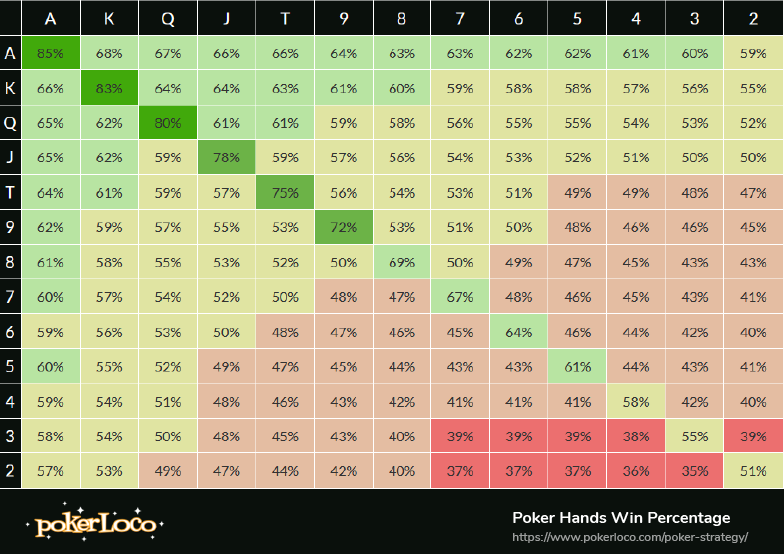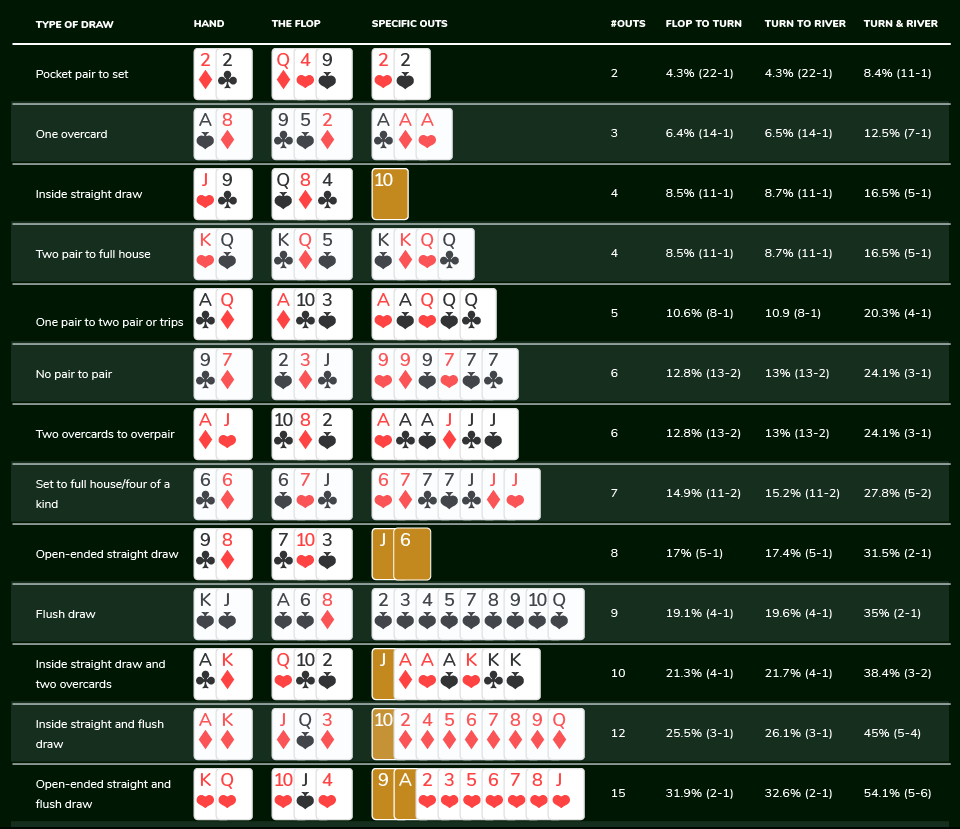10 Quick poker strategy tips from our experts to help you control the game
1. Play fewer poker hands and play them aggressively
Creating a poker persona is one of the hardest things to do as an amateur or professional. You can start by creating a solid preflop poker strategy so you can improve your bottom line. Showing discipline is one of the most difficult things to do, however playing a tight range of strong and playing them aggressive will put in advantage compared to your opponents.
Showing an aggressive playing style will put you in advantage even when playing more speculative hands, such as7♠ 6♠ or 5♥ 5♣, which will allow you to disguise the strength of your actual hand.
Your opponents won’t know the difference between A-A, A-K or 7-2, which makes you a though opponent in any situation. Remember, the turtle won against the hair. Tight and aggressive wins the game!
2. Never be the first player to limp
As the first player to make a move, do not limp. This is an absolute no-no as it increases the odds for the player behind you and makes it almost impossible to win the pot before the flop.
The only time limping is acceptable is when at least one other player has already limped. This is generally a good play as you are getting a free pass to join the action, and increase your chances of hitting something on the flop.
3. Semi-bluff aggressively with your draws
Being a good poker player, means mixing up your game and being an unpredictable player. This translates in bluffing with hands that will give you a higher pay out at the later stage of the game (turn, river) and the range of the hands you can bluff are either open enders, flush draws, straight draws, 1 pair or just even an overcard.
Think of this as your plan B in case you get called by your opponent(s).
4. Fast-play your strong hands
You want to get paid on your good cards, period. Slow-playing good cards is often a mistake among players whom are afraid to confront their opponents, offense is the best defense.
In most cases, the safest thing to do is to bet your strong hands and push the opponent out of the pot. This will help you build the pot and protect your equity.
There are a few scenarios where you can check your strong hands:
- When you know that you have the best possible hand
- When there aren’t many scare cards left in order to prevent you from getting paid.
- That you won’t be outdrawn
Being aggressive also means that you might push your opponents out of the pot, but that’s not all bad as it protects you from being outdrawn. A win it’s still a win.
5. Protect the big blind
We all love a good discount. Because of the mechanics of the big blind this means that you are already vested in the pot and the last one to act, increasing your pot odds to call than any other position.
Because you’re the last person to act preflop, you can easily call with many more hands than if you wee sitting in any other positions.
You might be asking, when should I protect my big blind? Here are a couple of scenarios:
- Positioning of the raiser
- How many players are in the hand
- How many raises have there been in the hand
- You’re stack size
6. Fold when in doubt
Ever wondered what separates good poker players from professionals. Pro’s know when to throw away a good pair when they think they’re beaten.
No one enjoys lying down their hand and surrendering to the enemy, but in order to be great at what you do you need to have the discipline to choose your battles.
Pro Tip: Be a nerd and document every move you made, if you were unsure by a certain hand you played and you had to fold it. Write down the scenario and possible ins and outs, this will help you improve your skills and fill in those poker knowledge gaps.
7. Smell weakness, attack!
Attack is your best offense. When sharks smell blood, they start swarming the waters and find the right place to attack.
You can train this, and once you feel that your opponent is unsure about their hand or what to do, it usually means that they have a relative weak hand and if you show enough aggression you can easily push them out of the pot.
8. Poker tournaments – don’t worry about surviving, go all in
Go 110% in your poker tournament games. In tournaments everyone if playing against the clock so you need to move fast and win as many chips as possible.
Remember, depending on the tournament size you only win money if you make it pass the “bubble” so focus on getting a deep enough stack, so it keeps you in the games long enough.
9. Play on your own terms
If you’re playing for fun or professionally you should still enjoy what you’re doing, so in order to get the best out of your game, be happy when you’re playing the game.
Remember if you play poker full time, this literally translates in a full-time job were you have to commit to a daily 8h grind. Thus, it’s extremely important to feel good when you’re at it, this will save you time & energy in the long run and help build your bankroll.
As a rule of thumb don’t play when you are feeling frustrated, fatigue you can feel the anger building up. Call it a night and get back to the grind next morning.
10. Choose your battles
Poker is a game of luck in the short run, but in the long run it turns in a game of skill. If you can’t spot the fish in the first hour at the table, chances are that you are the fish.
It’s a simple strategy, you should always put yourself in a position of strength so it increase your chances of winning. In life and in poker there is no room for ego, so take a step backwords so you can take two steps forward.
This is our signs for a good poker game:
- You can see that one player is limping regularly
- You can see 2-3 players go all in an battling for the pot
- Re-raises are rare or very often
If you can spot 2+ of the above signs you’re in a great spot to make a profit. If you can’t see any of the signs, better start looking for a more profitable table. If you are looking for a real money poker room our experts got you covered, and if you want to get a bang for your buck, we recommend checking our selection of Poker Free Rolls.




 Poker Starting Hand Strategy
Poker Starting Hand Strategy
 Poker hands out strategy
Poker hands out strategy